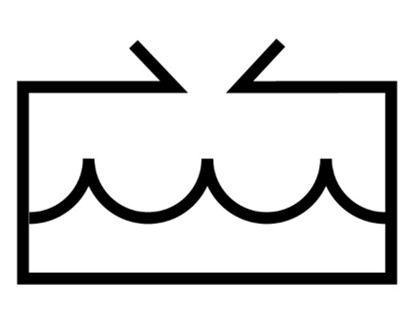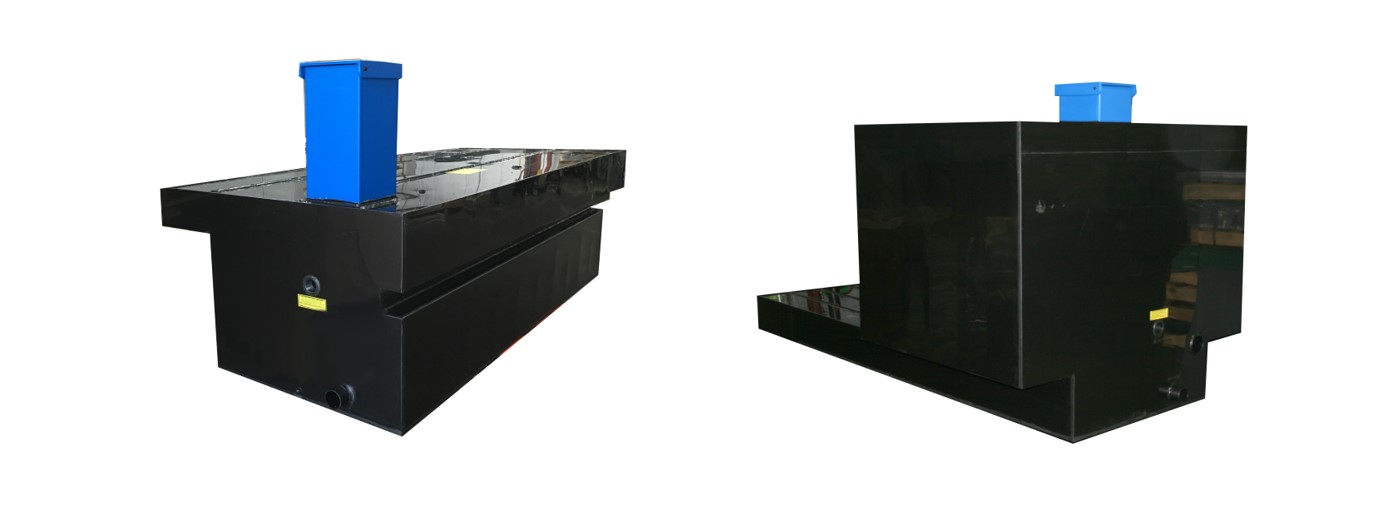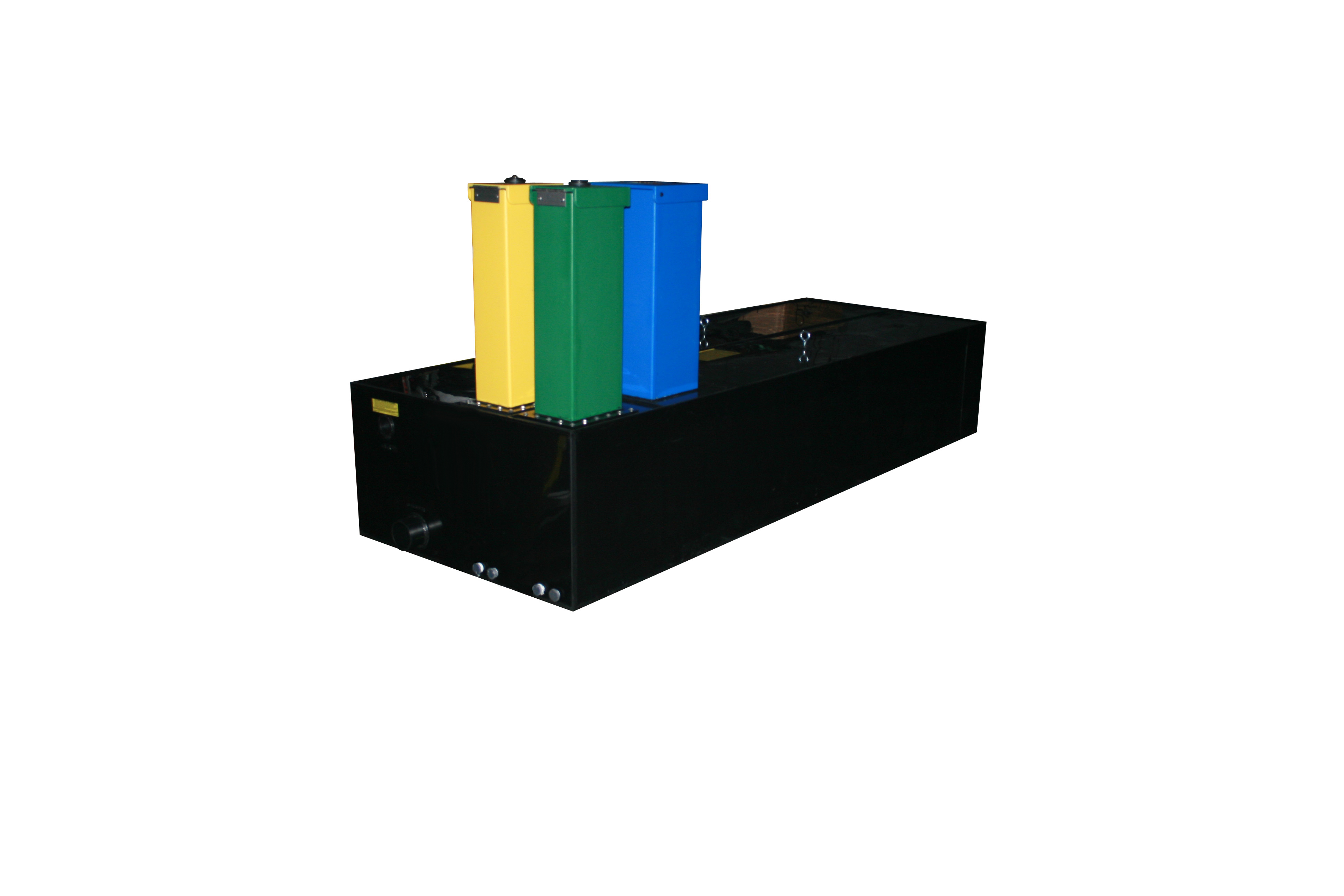FAMA BUYER’S GUIDE TC039 Water Tanks
FAMA BUYER’S GUIDE
TC039
WATER TANKS
Prepared by the FAMA Body Subcommittee
This guide does not endorse any manufacturer or product

Contents
Introduction
This guide is intended to provide fire service personnel with information about the various types of mobile water and foam tanks, and the options that are available for fire apparatus.
As with any custom design, there are pros and cons to each configuration, and not all are represented here. It is the responsibility of the purchaser to determine what best meets their needs, and to specify this information to prospective apparatus bidders, sellers, and manufacturers.
For more information, contact the FAMA Member manufacturers listed at www.fama.org.
The National Fire Protection Association Standards define voluntary minimum standards for automotive fire apparatus. The two most widely used Standards are: NFPA 1901®, Standard for Automotive Fire Apparatus and NFPA 1906®, Standard for Wildland Fire Apparatus. NFPA 414®, Standard for Aircraft Fire-Fighting Vehicles covers the unique tank requirements for this market segment.
The current editions should be referenced when specifying new apparatus. www.nfpa.org.
Within the 1901 and 1906 standards, Chapter 18 pertains to the water tank. Chapter 20 contains requirements of foam tanks.
Overview
Modern fire apparatus tanks come in many different configurations and are highly integrated in to the apparatus design. The tanks are comprised of many features and options that are utilized to not only store water, but also to optimize performance and reliability. This guide will present in general terms:
- Material Selection
- Shape/Style
- Plumbing
- Capacity
- Foam
- Performance
- Options
- Warranty/Service
Material Selection
HISTORY
Apparatus manufactures originally constructed their own tanks generally from the same material used to construct the body. Up until the 1970’s, this meant some form of steel tank, starting with untreated steel tanks in the 1950’s, to galvanized in the 1960 and 70’s. Stainless steel and aluminum were the norm to the mid 1980’s until fiberglass started to appear in this time frame. In the mid 1980’s, polypropylene water tanks were introduced, and currently represents the majority of the tanks that are constructed today.
STEEL / STAINLESS STEEL / ALUMINUM
Stainless steel tanks are fairly uncommon in today’s Fire apparatus, but they still exist. Stainless steel tanks are going to most likely to be found in elliptical shapes, where the fire department is looking for an aesthetically pleasing untreated brushed or mirrored finish. Due to the high material cost, and associated problems with cracking and microbiologically influenced corrosion, there is an alternative cost savings approach by wrapping a fiberglass or polypropylene tank with stainless steel. In addition, in some applications where there is high system operating pressures, or a vacuum style application, the use of stainless steel or aluminum tanks are better suited due to increased mechanical properties. Steel tanks require annual maintenance to prevent rust from clogging fire appliances. This must be considered when evaluation total life cycle costs. In general, steel has the lowest initial cost, followed by aluminum and then stainless steel. Steel and stainless steel have the greatest weight penalty, which reduces the available payload of the truck. Most metallic tanks can be recycled. Warranties range from one to seven years.
FIBERGLASS
Fiberglass tanks offer the ability to easily integrate the tank and body structure in a uniform assembly. The surface finish is excellent and well suited for an exposed automotive application. The use of fiberglass requires molds of some nature, so it is better used in applications that are repetitive in nature due to the higher initial cost of tooling. Fiberglass also excels with respect to corrosion resistance as well as high tensile and flexural properties. These properties allow the tanks to have fewer structural supports which results in increased volume. Fiberglass is however a relatively brittle material that can be difficult to repair if the core material has absorbed water. In severe cases of delamination, clogging of fire appliances is possible. Dimensional tolerances for fiberglass can vary greatly due to the manufacturing process, so additional allowance must be accommodated for the tank frame and interfacing components. Fiberglass tanks are typically lighter than steel and stainless steel tanks, but heavier than polypropylene. Fiberglass tanks are generally considered maintenance free. The raw materials used in the manufacture of these tanks have the greatest environmental impact and may be limited by VOC emissions. Fiberglass tanks are not recyclable. Warranties can range from one year to limited lifetime.
POLYPROPYLENE
The majority of tanks today are manufactured out of sheets of co-polymer polypropylene. It consists of a mixture of polypropylene with a small amount of polyethylene for added impact resistance (henceforth for the rest of the buyer’s guide just called Polypropylene or Poly). Polypropylene tanks represent great value in terms of total life cycle costs. Although slightly more expensive than stainless steel tanks, there is significant weight savings over steel. In addition, the polypropylene tanks have a long life due to the fact the material will never corrode or crack. Polypropylene tanks generally come with a limited life time warranty. Due to lower mechanical properties, they are not the best option for high fill rate and pressures, or vacuum style tank applications. Polypropylene represents the least environmental impact in terms of raw material manufacture and processing. Polypropylene is completely recyclable. As discussed earlier, the majority of tanks in the fire service are manufactured from polypropylene, so for the balance of this buyer’s guide, it will be assumed that the tank will be manufactured from polypropylene. Please keep in mind that with the great variety of applications in the fire service, other materials may be better suited for a particular function. Please work with the tank supplier or OEM to determine what may be best in these types of unique circumstances.

Shape/Style

RECTANGULAR / T-STYLE
The most common shape of the fire apparatus tank is a rectangular or T-shaped which is made up of notches that run the length of the tank. Each tank is custom manufactured to fit into the overall space remaining after the compartment options are chosen. The tanks can become progressively more complex in shape as the amount of water required increases and space becomes limited. In general, the overall shape will be primarily dictated by the options and compartment choices made.
ELLIPTICAL STYLE / ELLIPTICAL-T STYLE
The other common shape of polypropylene tanks is the rounded elliptical style tanks. The elliptical tank is a throwback to when old milk trucks were converted into fire apparatus. Today the elliptical style tanks offer very little in differences between there rectangular counterparts. The main advantage to an elliptical style tank is improved reliability as there are no sharp angles resulting in stress risers on weld joints. Although the modern polypropylene tank is extremely reliable, severe use could result in these areas and result in a failure. The elliptical style tanks are generally more efficient in water and foam evacuation than the flat bottom tee and rectangular shaped tanks. The disadvantages to the elliptical style tanks, is due to the construction, there is a reduction in lack of space resulting in fewer available options. Elliptical tanks tend to have a higher center of gravity, and have the added cost due to the commonly used stainless steel jacket wrap.
Some manufactures construct elliptical tanks using cylindrical sections that are joined together and reinforced with bands. This leaves a disjointed appearance, and would be not aesthetically pleasing in most applications if painted. However, if covered with stainless steel wrap, they are indistinguishable from a stainless steel tank. Additionally, elliptical tanks require a more complex mounting system then conventional tee and rectangular tanks.
Elliptical-T style tanks incorporate a flat top and bottom similar to a tee tank, but have a cylindrical shape on the top section side walls. This construction allows for seamless side walls that are suitable for painting. The flat top also provides a better walking surface to access the fill tower. Fall protection should be considered if this area is intended to be used as a walking surface. Since the lower flat bottom section is identical to a rectangular and tee shaped tank, it uses the same sub frame and mounting arrangement. This provides for a lower cost installation and consistency across product lines. For more information, contact the manufacture on how they construct their elliptical and elliptical-T style tanks.
WETSIDE OR DRYSIDE
Wetside or Dryside refers to the placement and use of the tank in the overall apparatus construction. A Wetside tank utilizes the tank wall as the outer wall on the fire apparatus body. In other words, the side wall has water behind it (wet). The painted polypropylene finish is nearly indistinguishable from that of other materials. Tanks that are Wetsides will generally use thicker gauge material (3/4” vs. ½”) side walls to reduce the appearance of ribbing where the internal baffling is welded to the side walls. Cost savings can be realized with the elimination of a metal body, and also allow for increased water carrying capacity with the additional volume gained.
A Dryside tank is one in which the tank side wall is not the exposed body side. In these applications, there are either additional polypropylene compartments around the tank, or a separate decorative body panel made from metal or fiberglass that acts as the side of the apparatus. Dry side tanks can be constructed with ½” material as the tank finish appearance is no longer critical.
Plumbing
The term plumbing in regards to the tank is considered any fills or piping that runs through the tank. Examples are the tank suction (tank to pump) tank fills (pump to tank) sleeves (for rear discharges), and conduits (for wiring).
Here are some areas that can affect pricing on the tank, and perhaps the overall apparatus that are related to plumbing. Suction draw point: if you are drawing from the middle of the tank vs. the front of the tank, this will increase the amount of plumbing needed, and may increase the cost. Foam draw point: this is your foam cell outlet utilizing a dip tube suction. Dip tubes are plumbed into the water section of the tank and below the foam cell. This allows the most amount of foam to be used in the cell but also increase the amount of plumbing needed versus a standard tapped hole at the base of the foam tank cell. Foam cell location in relation to the pump: this may drive the need for increased plumbing to span the distance. Rear discharge or electrical conduits run inside or outside the tank: running the plumbing through the tank instead of outside of the tank for rear discharges and electrical lines, could be a cost increase or savings depending on the application. Wetside or Dryside applications may also drive the need for one design over the other due to the lack of body components to conceal these features.
Tank Manufactures can use a variety of materials and fasteners for their internal plumbing. The benefits should be discussed with each tank manufacturer to fully understand the pros and cons of the type of plumbing they use. Points to discuss would be are they using rigid plumbing (examples: polypropylene pipe and elbows) or soft plumbing (example: flexible tubing) and finally whether the plumbing is joined by mechanically fastening, welding, or electro-fusion.
Capacity
Since each tank is custom manufactured they can come in a verity of sizes based upon the user’s specification. The reliability and performance of the tank can be impacted on each end of the spectrum. Here are a few points to consider when determining the physical size of the tanks. If a small tank is required, the evacuation performance can suffer if there is not sufficient head pressure. Tanks that are long and short in height have a tendency to perform poorly when not on level grade. This can also lead to inaccurate tank level readings. In addition, tanks that are very narrow, say less than eight inches, may result in difficulties manufacturing that potentially impact the reliability of the tank. Work with the tank manufacturer’s recommendations to avoid these potential pitfalls.
Large tanks that are greater than 5000 gallons potentially may reach the upper limit for polypropylene tanks. The dynamic forces encounter during transport may exceed the mechanical properties of the material. In addition, thermal expansion and contraction rates with tanks of this size, also become more challenging to effectively design in the overall apparatus. Please contact the tank manufacturer directly for more information on what is possible to manufacture on the upper limits.
Foam
Foam tanks can be designed as independent reservoirs or can be integrated in the water tanks. Smaller tanks in the range of 5-50 gallons are most commonly integrated with the water tank. Tanks that are shallow and long can be problematic if not used on a level grade. Problems include inefficient evacuation and premature system shutdown due to inadequate foam supply at the suction port. The location of the fill tower and ports are the driving factors in tank performance. Having the two tanks packaged together helps to simplify the integration in the fire apparatus. Although combination water and foam tanks used in industrial applications can be much greater in size, they can still be effectively integrated. There are of course increased complexities with integrating larger tanks, so early discussion in the design phase with the tank manufacturer is important. Sizes of foam tanks can range similarly in size to water tanks. Foam tanks must be sealed vessels to help preserve the life and performance of the foam products being stored. This is accomplished by utilizing a gasket to seal the lid, and a locking device to hold the lid closed. Pressure and vacuum vents are provided in the fill tower or lid to compensate for changes in pressure or vacuum when filling or withdrawing foam from the tank. Consideration should also be given to the type of foam being used so the tank can be properly designed. Viscous foams require special flow considerations so the tank can be properly and completely evacuated. Foams storage tanks should also be clearly marked to prevent mixing of different brands or types of foam. Intermixing of foams may be result in damaging the product making it ineffective to use and clogging of foam proportioning system components can occur. Marking methods include labeling and color coding the fill towers. Foam systems that have provisions for refilling by use of a pump must be properly designed to prevent over-pressurization of the tank.
Performance
All tanks 500 gallons and greater have a minimum performance requirement to evacuate water at 500 GPM. Properly designing the tank to pump lines is critical to performance. Evacuation rate requirements should be discussed if they are higher than those specified in the NFPA standards. Related to the efficiency of the tank is the ability to evacuate the water at the required flow rate for a minimum of 80% of the rated capacity. Inefficient tanks require the apparatus to carry additional water reserves to meet the requirement. This may impact the truck’s payload for equipment and personnel. The ability of the tank to properly vent during filling and overflow when full, are important factors to prevent over-pressurization. Other considerations include the effectiveness of the tank baffling system to dampen the movement of water while in transit, to ensure the stability of the fully loaded apparatus under all conditions. Finally, the material and mount system must be properly designed for the application and environment to ensure reliable use for the service life of the vehicle.
Options
Since the tank is custom fabricated, there are a myriad of tank options that can be incorporated into the design. Please consult the tank manufacturer for a complete list as well as to inquire about other possibilities for a unique application. The following list is just some of the features and options that can be incorporated by the tank manufacturer.
INTEGRATED FEATURES
Ladder Tunnels / Hard Suction Compartments:
Poly ladder storage tunnels and hard suction compartments can be integrated through the tanks as well as affixed to the sides or even under the tank. This helps keep the equipment low to the ground and fire fighters off the top of the vehicles.
Storage Compartments:
Integrated storage compartments with the tank, can be made with Poly hinged doors or prepped to accept roll up doors.
Body:
Much like the single compartment, the entire body can be made from poly material and integrated with the tank, to form a single unit. Some manufactures will share common walls with the body, others will build the body as a separate assembly. The one-piece large assembly simplifies mounting, maximizes storage, reduces weight, and allows the truck manufacturer to increase his throughput, without additional space or resources, with the higher content provided by the tank manufacturer.
Hosebed:
Tank covers can have channels machined in surface to act as a hosebed floor to allow for drying and water runoff. This eliminates the need for a separate assemble and reduces the height of the hose load and truck CG. in addition, the poly material and tank can form the hosebed walls and dividers.
EXTERNAL FEATURES
Mounting blocks:
These blocks are designed to allow blind fasteners to be installed on the tank to attach mounting brackets for equipment. Mounting blocks are available in any size required for the application, and can be provided with or without preinstalled threaded inserts. In some instances, one might just request thicker tank wall so mounting points can be anywhere on that surface.
Slotted blocks:
Slotted blocks are identical to the standard mounting block only with a machined in slot for the insertion of sliding tee nuts. Slotted blocks are ideal for mounting hose reels, shelving and adjustable hosebed dividers or wherever an adjustable mounting surface is desired.
Warranty / Service
Most tank manufactures offer a limited lifetime warranty on their products, but that does not mean they are all the same. Each warranty from the manufacturer may be slightly different with respect to the definition of limited lifetime. It is best to request the exact warranty from each potential manufacturer, and do a compare and contrast for yourself on the difference and what items are most important for your situation. Some key points to consider when comparing warranties would be:
- Any differences between USA/Canada?
- What are the international provisions of the warranty?
- Any time or number of repair limitation that affect the warranty?
- What does the warranty say about making tank access for repair?
- Are there any differences based on the product you are buying?
The final consideration when reviewing the warranty is to understand the tank manufacturer’s service capabilities. How many service technicians do they employ and where are they located? What is the typical lead time for a tank to be serviced? These are important considerations when choosing a tank manufacturer.

